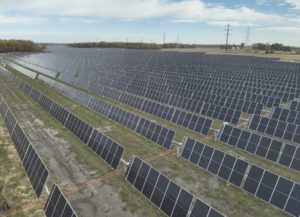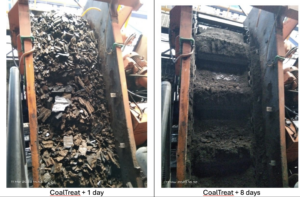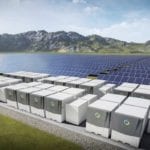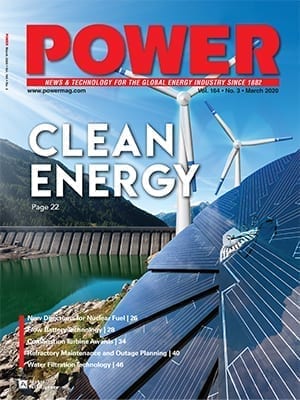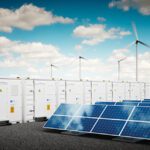As a significant final move before the incoming Trump administration takes office, the Biden administration has announced conditional loan commitments totaling $22.92 billion to support projects by eight utility companies across the U.S. The investments will seek to modernize infrastructure, expand clean energy generation, and improve grid reliability, impacting millions of customers, the Department of Energy (DOE) said on Jan. 16.
The financing is provided through the Loan Programs Office’s (LPO’s) Title 17 Energy Infrastructure Reinvestment (EIR) program created by the 2022-enacted Inflation Reduction Act (IRA). The conditional commitments span projects by Pacific Power, DTE Energy, Interstate Power and Light, Wisconsin Power and Light, Consumers Energy, Jersey Central Power & Light, and American Electric Power’s transmission division. The utilities operate in California, Idaho, Oregon, Utah, Michigan, Iowa, Wisconsin, New Jersey, Indiana, Ohio, Oklahoma, and West Virginia, serving a combined customer base of about 15 million.
More the Biden administration: PG&E will receive $15 billion from the Loan Programs Office to support its projects in California.
DTE Electric Co. will receive $7.17 billion to finance renewable energy generation and battery storage installations in Michigan, including the Trenton Channel Battery Energy Storage System as an anchor project. These investments will help the utility provide safe, reliable, and cleaner energy to its customers, the DOE said. Projects are expected to come online by the end of the decade.
Separately, DTE Gas Co. will receive $1.64 billion to modernize natural gas infrastructure by replacing legacy pipelines and moving meters outdoors. The effort builds on the utility’s Gas Main Replacement Program, improving safety and reducing methane emissions. Upgrades will be coordinated with local cities to minimize disruptions, with completion expected within the next few years.
Consumers Energy has been conditionally approved for $5.23 billion to upgrade its energy infrastructure, including investments in solar, wind, battery storage, virtual power plants, and the replacement of 1,700 miles of aging natural gas pipelines in Michigan. The Enhanced Infrastructure Replacement Program, ongoing since 2012, will reduce methane leaks and improve safety. Several of these projects are expected to be completed by 2031, aligning with the utility’s net-zero greenhouse gas emissions goal by 2050.
PacifiCorp, serving six Western states, will receive $3.52 billion for Project WIRE, which includes constructing 700 miles of high-voltage transmission lines across Idaho, Oregon, and Utah. Upgrades are expected to enhance grid flexibility, reduce curtailments of wind power, and support future renewable energy projects. Project WIRE is expected to be online by the mid-2030s and will create 3,500 union-represented jobs.
Alliant Energy subsidiaries, Interstate Power and Light (IPL) and Wisconsin Power and Light (WPL), will share $3 billion ($1.43 billion for IPL and $1.62 billion for WPL) to develop 2,000 MW of clean energy generation and battery storage in Iowa and Wisconsin. “The company retired a major coal-fired facility in Iowa in 2023 and plans to cease burning coal at its coal-fired facility in Wisconsin before 2030,” the DOE noted. Projects supported by conditional commitments will replace retired coal plants and align with Alliant’s goal to reduce greenhouse gas emissions by 50% by 2030 and eliminate coal use by 2040, it said. Construction is expected to begin in phases over the next decade.
AEP Transmission Co. will receive $1.6 billion to upgrade nearly 5,000 miles of transmission lines across Indiana, Michigan, Ohio, Oklahoma, and West Virginia. These upgrades will increase transmission capacity by 70%, reduce line losses, and support the integration of new renewable energy projects. Initial projects in Ohio and Oklahoma, covering 100 miles of transmission, are expected to begin soon and contribute to emissions reductions.
Jersey Central Power & Light will receive $716 million for the New Jersey Clean Energy Corridor, a project that seeks to upgrade 40 miles of transmission and substation infrastructure. The project will enable the integration of 4,890 MW of clean energy into the grid. It is expected to generate $150 million in ratepayer savings and support New Jersey’s 100% clean energy target by 2035. Construction is expected to be completed within the next few years.
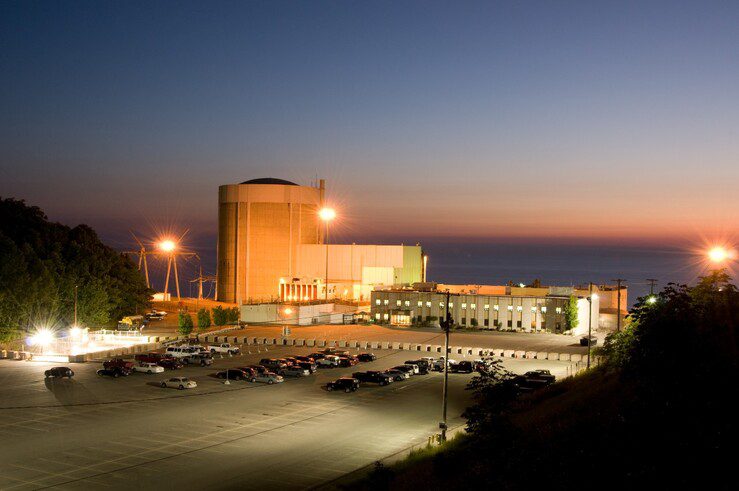
Leveraging the IRA’s EIR Program
As the DOE explained on Wednesday, the EIR program, created by the IRA and administered by LPO, is designed to provide loan guarantees for projects that retool, repower, repurpose, or replace existing energy infrastructure that has ceased operations. It also enables financing for operating energy infrastructure projects that can reduce air pollutants or greenhouse gas emissions.
“The Title 17 Energy Infrastructure Reinvestment (EIR) Program utilizes a flexible loan facility and disbursement approach tailored for regulated, investment-grade utility borrowers,” explained LPO Director Jigar Shah in a LinkedIn blog post in December. “This approach accommodates utility infrastructure plans that include multiple individual project sites, including individual project components that may be technologically diverse, geographically varied, and at different stages of the utility planning and execution process.”
Prior to conditional commitment, LPO works with the utility borrower “to scope a defined project consisting of these potential eligible individual project components and to determine an appropriate loan amount when underwriting the deal,” he noted. “The loan amount reflects the maximum amount the utility may borrow, but in order to draw down the LPO financing, the borrower must submit information and invoices at the individual project component level for validation and reimbursement.”
The agency’s first loan guarantee through the EIR program, notably, went to Holtec International to support the recommissioning of the 800-MW Palisades nuclear plant in Covert Township, Michigan, after securing a conditional commitment in March 2024. The $1.52 billion loan guarantee was finalized in September 2024. At the time, POWER reported $64.89 billion in Advanced Nuclear projects had submitted applications or are expected to submit applications in the next 120 days, including $12.09 billion in Section 1703 projects and $52.8 billion in Section 1706 (EIR) projects.
In December 2024, LPO announced its first conditional loan guarantee under the EIR program—of up to $2.5 billion for WEC Energy subsidiary Wisconsin Electric Power Co. for a 1.7-GW portfolio of utility-scale renewable power generation and energy storage projects in Wisconsin. As part of the loan guarantee process, LPO conducted an eligibility assessment and environmental review of the anchor project—the rehabilitation of WEPCO’s Big Quinnesec Falls hydropower facility.
Later that month, it issued its second EIR conditional commitment of up to $15 billion for Pacific Gas & Electric Company (PG&E) to build out its ambitious Project Polaris. The project includes a portfolio of infrastructure investments designed to expand hydropower generation, enhance battery energy storage, upgrade transmission capacity through reconductoring and grid-enhancing technologies, and deploy virtual power plants across Northern and Central California.
As of September 2024, LPO says it has financed a $43.9 billion portfolio. A graphic released by the DOE on Thursday suggests the EIR program, which is backed by $250 billion in lending authority, has an application pipeline exceeding 47 projects, representing a cumulative $139.2 billion.

On Wednesday, a DOE official told reporters eligible projects offered conditional commitments under the EIR program will include “gigawatts of new clean electricity generation from sources like wind, solar and hydropower” as well as “expanded grid-scale energy storage capacity” and “critical investments in our grid, from transmission lines to substations and grid enhancing technologies.” The program also supports “utility gas infrastructure to reduce pipe leakages.”
Projects were selected based on their ability to reinvest in aging energy infrastructure, reduce air pollutants or greenhouse gas emissions, and strengthen the resilience of the nation’s power systems, the official said. “It’s really in recognition that our country faces an aging energy system across power and gas infrastructure, and this is an opportunity to make it more attractive to reinvest in those assets and really strengthen the resilience of the systems nationwide,” she said. She also noted that the selected utility projects had already received regulatory approval from state utility commissions or the Federal Energy Regulatory Commission (FERC) prior to receiving the EIR financing.
Ensuring Accountability and Mitigating Risks
Rather than the LPO’s typical project-specific financing, the EIR program uses a “portfolio-style lending approach” that the official said “looks more like a line of credit.” She explained that “utility infrastructure plans include investments across hundreds and sometimes even thousands of individual project sites that are technologically diverse, geographically varied, and are at different stages of the utility planning and execution process.” The flexibility is intended to better align with how regulated, investment-grade utilities typically finance their capital expenditures at the corporate level, rather than on a project-by-project basis, she said.
Significantly, the DOE stressed that “in order to receive disbursements under these loans, the electric utility applicants must demonstrate to DOE that the financial benefits received from the guarantee are passed on to their customers or to the associated communities that they serve.” This aligns with the LPO’s goal to “make the clean energy transformation affordable and achievable for everyone.”
The LPO also emphasized that these utility loans pose minimal risk to taxpayers, unlike the limited-recourse structures used for some of the office’s other innovative energy projects. “Unlike the limited recourse structure used to isolate risk in categorically innovative projects, loans under the EIR program are made directly to the operating company, either the utility or its parent company,” said an LPO official. “These loans are only made to investment-grade utilities, and they’re supported by all of the assets of the company, not just the assets that we finance.”
The announcement of the $22.92 billion in conditional commitments comes as the LPO continues to deploy funding allocated through the IRA. The office has not disclosed the total remaining lending authority under the IRA. It told reporters it now only provides annual updates on those figures. “We’re not doing it month to month anymore,” the DOE official said.
Asked how the agency expects conditional commitments to fare under the incoming Trump administration, the DOE noted that conditional commitments are legally binding agreements that obligate the funds once the conditions are met.
“Conditional commitment is a legally binding agreement by DOE to make a loan to a borrower when specified conditions are fully fulfilled by that borrower. And so, as a binding agreement, funds are obligated at the time of conditional commitment,” the official clarified. “Once the conditions precedent are met, the conditional commitment can advance to financial close, that is, the date on which definitive financing documents are executed and become effective. Definitive financing documents executed by DOE are also legally binding contracts,” she said.
—Sonal Patel is a POWER senior editor (@sonalcpatel, @POWERmagazine).



